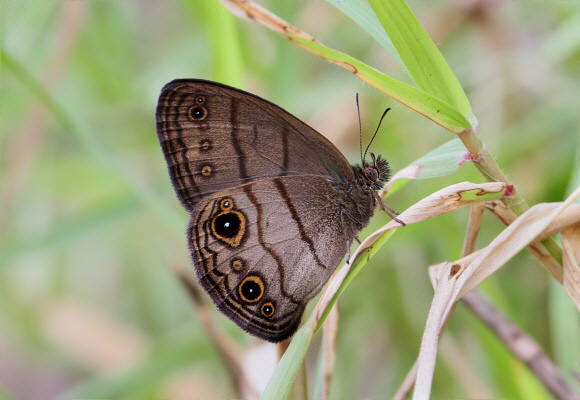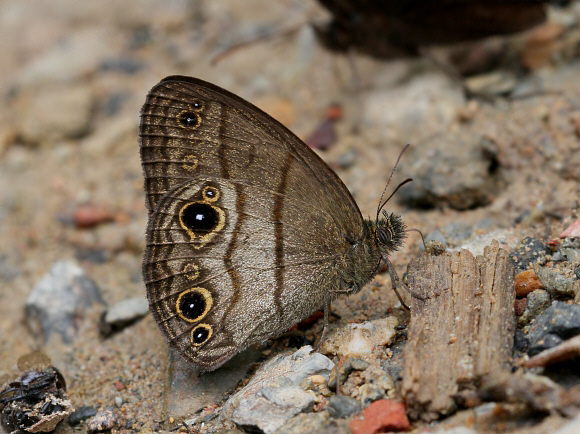
Introduction
There are about 400 known species in the subtribe Euptychiina, which includes all the neotropical ‘ringlet’ butterflies. Until fairly recently almost all were placed in the genus Euptychia, but revisions by Forster ( 1964 ) and Lamas ( 2004 ) divide this ‘convenience’ genus into a number of smaller genera, including Caeruleuptychia, Cissia, Magneuptychia, Cepheuptychia, Chloreuptychia and Euptychioides.
The ‘Euptychia’ ringlets are notoriously difficult to identify. The ground colour, wingspan, width of the median bands, and size of ocelli vary within each species according to sex, habitat, location, altitude and seasonal climatic conditions. It is appropriate here to quote the words of d’Abrera, who when referring to the hundreds of specimens depicted in his “Butterflies of the Neotropical region” states “I cannot tell with certainty whether the taxa figured are species, races, or infrasubspecific forms”.
Hermeuptychia harmonia is found from Colombia to Peru.
Habitats
This species inhabits open grassy areas in cloudforest at elevations between about 1400-2000m.

Lifecycle
Unknown. The lifecycles of related species would seem to indicate that it probably lays its eggs singly on the foodplant, which is likely to be a member of the Poaceae or Marantaceae. The larvae are likely to be brown, with fine longitudinal lines along the back and sides, and with a pair of caudal prongs.
Adult behaviour
The butterflies are usually encountered in three’s and four’s in well forested areas, mud-puddling on sand or bare soil in roadside ditches or runnels. They also occur along wide sunlit forest paths, open riverbanks, and other grassy areas.
If disturbed they flutter quickly, but settle within a few metres, usually on grasses or low herbage.
